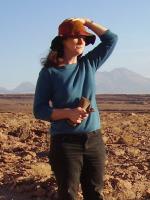Sidebar
Events Calendar
Understanding how stars form - new information from large radio surveys
Galaxies are the building blocks of the Universe. Stars, in their births and deaths, shape galaxy evolution, and hence understanding how stars form is important.
As stars form deep in molecular clouds, we can only observe the process of their formation at radio wavelengths, which are transparent to the dust that molecular clouds contain.
In this talk I will explain how star formation works, what we do and do not know, and how large-scale automated telescope surveys coupled with automated analysis techniques are driving forward our understanding of star formation and galaxy evolution.
 Dr Maria Cunningham
Dr Maria Cunningham
I gained my PhD jointly with CSIRO ATNF and what is now WSU. While undertaking my PhD I also ran the Public Access Observatory of WSU, at the Werrington North campus. In 2002 I accepted a lectureship at UNSW, in the School of Physics, and there I have stayed. I have been lucky enough to use some of the world's premier research facilities, such as the Atacama Large Millimetre Array ALMA. However, I have a strong interest in both teaching and research, and I am pretty handy with teaching-level optical telescopes on a cold clear night. They are invaluable for interesting students in science.
